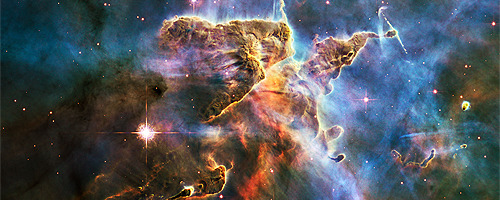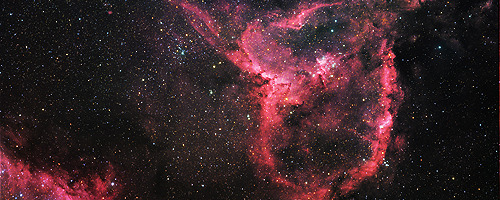At What Point In History Do You Think Americans Stopped Having British Accents
at what point in history do you think americans stopped having british accents
More Posts from Study-astronomy-biology-ref and Others

Three galaxies at once
Rising majestically above the telescopes of ESO’s La Silla Observatory in Chile we see the Milky Way accompanied by its two dwarf neighbour galaxies, the Large and Small Magellanic Clouds.
Credit: ESO/A. Santerne

Baobab & Milky Way
A baobab tree and the central band of the Milky Way galaxy in the village of Antsiraraka in Madagscar, July 2010.
Credit: Florian Breuer

Skull of a woman with monocephalus diprosopus. This is a form of conjoined twinning characterized by a single head and two faces. From the Museum of Anatomy in Montpellier, France.

Tardigrades: ‘Water bears’ stuck on the moon after crash
The moon might now be home to thousands of planet Earth’s most indestructible animals.
Tardigrades - often called water bears - are creatures under a millimetre long that can survive being heated to 150C and frozen to almost absolute zero.
They were travelling on an Israeli spacecraft that crash-landed on the moon in April.
And the co-founder of the organisation that put them there thinks they’re almost definitely still alive.
The water bears had been dehydrated to place them in suspended animation and then encased in artificial amber.
“We believe the chances of survival for the tardigrades… are extremely high.”

A section of Hubble’s sharpest view of the Andromeda galaxy to date, taken last year.
source
Sleep is your superpower | Matt Walker
Sleep is your life-support system and Mother Nature’s best effort yet at immortality, says sleep scientist Matt Walker. In this deep dive into the science of slumber, Walker shares the wonderfully good things that happen when you get sleep – and the alarmingly bad things that happen when you don’t, for both your brain and body. Learn more about sleep’s impact on your learning, memory, immune system and even your genetic code – as well as some helpful tips for getting some shut-eye.
-
 penumbra-the-unicorn liked this · 3 weeks ago
penumbra-the-unicorn liked this · 3 weeks ago -
 missadorable96 liked this · 1 month ago
missadorable96 liked this · 1 month ago -
 askprofessorx liked this · 1 month ago
askprofessorx liked this · 1 month ago -
 hyperfixual liked this · 2 months ago
hyperfixual liked this · 2 months ago -
 fangsartworkshop reblogged this · 2 months ago
fangsartworkshop reblogged this · 2 months ago -
 xxiiageparanoid liked this · 3 months ago
xxiiageparanoid liked this · 3 months ago -
 kiyosheep liked this · 4 months ago
kiyosheep liked this · 4 months ago -
 earththeplanet liked this · 5 months ago
earththeplanet liked this · 5 months ago -
 fantrash-and-mediocre-moe-isms reblogged this · 5 months ago
fantrash-and-mediocre-moe-isms reblogged this · 5 months ago -
 fantrash-and-mediocre-moe-isms liked this · 5 months ago
fantrash-and-mediocre-moe-isms liked this · 5 months ago -
 creationvoid liked this · 5 months ago
creationvoid liked this · 5 months ago -
 thelittlemort reblogged this · 5 months ago
thelittlemort reblogged this · 5 months ago -
 annita89v5a8zjh liked this · 6 months ago
annita89v5a8zjh liked this · 6 months ago -
 annatxu5w liked this · 6 months ago
annatxu5w liked this · 6 months ago -
 fablenaught reblogged this · 6 months ago
fablenaught reblogged this · 6 months ago -
 methodicalsage reblogged this · 6 months ago
methodicalsage reblogged this · 6 months ago -
 methodicalsage liked this · 6 months ago
methodicalsage liked this · 6 months ago -
 cat-and-cazio liked this · 6 months ago
cat-and-cazio liked this · 6 months ago -
 nirilla reblogged this · 6 months ago
nirilla reblogged this · 6 months ago -
 nirilla liked this · 6 months ago
nirilla liked this · 6 months ago -
 placebob liked this · 7 months ago
placebob liked this · 7 months ago -
 themarydragon reblogged this · 7 months ago
themarydragon reblogged this · 7 months ago -
 queenofperv reblogged this · 7 months ago
queenofperv reblogged this · 7 months ago -
 byler-endgayme reblogged this · 7 months ago
byler-endgayme reblogged this · 7 months ago -
 byler-endgayme liked this · 7 months ago
byler-endgayme liked this · 7 months ago -
 starrisoul liked this · 7 months ago
starrisoul liked this · 7 months ago -
 haveahearttinman reblogged this · 7 months ago
haveahearttinman reblogged this · 7 months ago -
 ghostdaartist liked this · 8 months ago
ghostdaartist liked this · 8 months ago -
 photosbyjaye reblogged this · 8 months ago
photosbyjaye reblogged this · 8 months ago -
 squeackygee reblogged this · 8 months ago
squeackygee reblogged this · 8 months ago -
 crucified-dustymole reblogged this · 8 months ago
crucified-dustymole reblogged this · 8 months ago -
 ineffable-shenanigans reblogged this · 8 months ago
ineffable-shenanigans reblogged this · 8 months ago -
 annballofyarn liked this · 8 months ago
annballofyarn liked this · 8 months ago -
 twixpie liked this · 8 months ago
twixpie liked this · 8 months ago -
 carrythatwayt reblogged this · 8 months ago
carrythatwayt reblogged this · 8 months ago -
 carrythatwayt liked this · 8 months ago
carrythatwayt liked this · 8 months ago -
 blackmoonofthevoid reblogged this · 8 months ago
blackmoonofthevoid reblogged this · 8 months ago -
 blackmoonofthevoid liked this · 8 months ago
blackmoonofthevoid liked this · 8 months ago -
 manga-wolfsengel reblogged this · 8 months ago
manga-wolfsengel reblogged this · 8 months ago

This is a studyblr for everyone have some passion for science, especially astronomy and biology
129 posts










